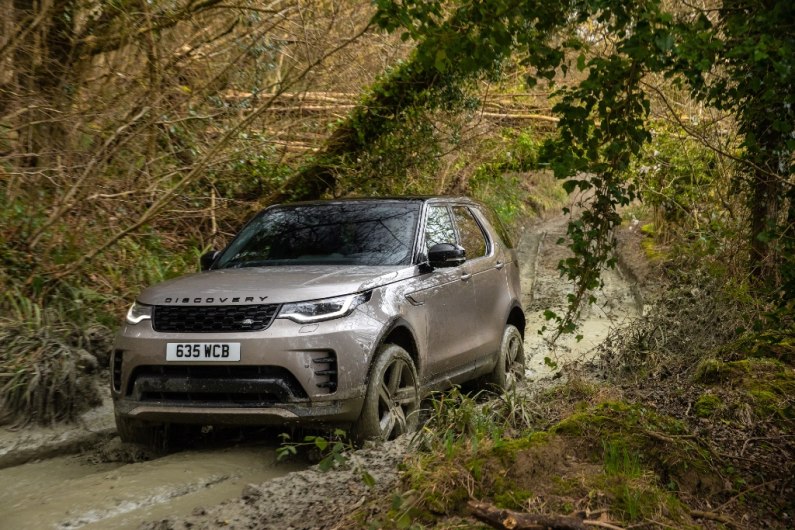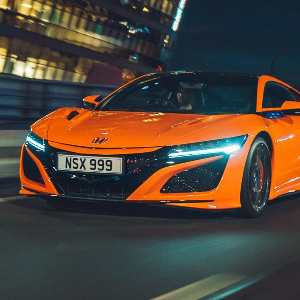
PROS:
+ More refined than a Land Rover Defender
+ Incredibly capable off-road
+ Loads of space for people, dogs or other oversized miscellanea
CONS:
– Awkward rear styling
– Pricey options list
– Not as ‘cool’ as a Defender
Verdict: This refreshed Discovery might only possess a handful of visual changes over its predecessor, but the new mild hybrid engines under the bonnet are the real headlines. Refined, capable both on and off-road, and now a little bit greener than before, this Disco refines an already well received formula.
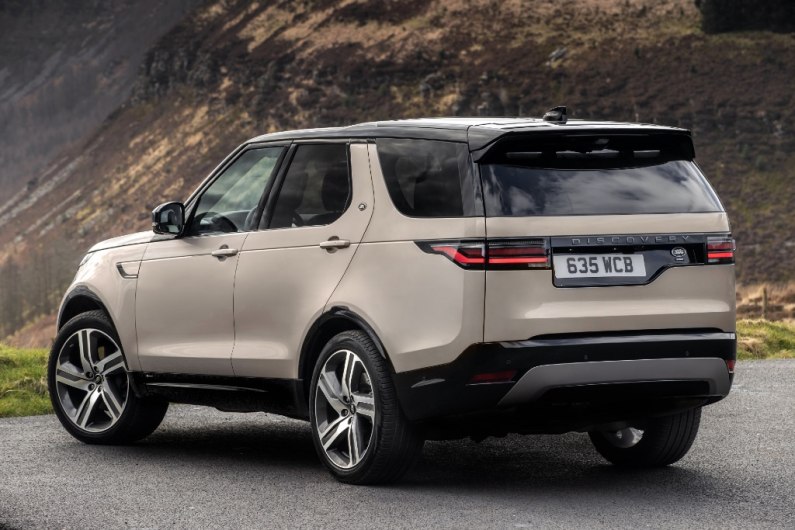
2021 Land Rover Discovery review: the five-minute read
There’s one Land Rover in particular that has been stealing the spotlight of late, and that’s the reborn Defender. That 4x4 fully deserves all of the praise it receives, but its introduction raised a very important question for Land Rover… What would become of the Discovery? A vehicle seen as a staple of its range, would the Defender 110 cannibalise seven-seat sales? This refreshed Land Rover Discovery highlights that the iconic nameplate is going nowhere.
Generally speaking, the styling of the Discovery hasn’t changed all that much since this generation was introduced back in 2017. It still possesses that strong stance that gives it a real sense of purpose when stationary, its ancestral kink in the roof, but also that rather awkward offset numberplate placement. There’s a new front grille for this model year, a trio of fresh paint options, LED lights and alternative alloy wheel styles. These small changes add up to a large SUV that still strikes a good balance between looking functional and being premium.
The interior has had a good going over, too. A new multifunction steering wheel sits ahead of a configurable digital instrument cluster, and refinements to materials push the cabin a little further upmarket. A new 11.4-inch Pivi Pro infotainment system offers plenty of real estate for media and navigation. This latest system is a big improvement on what came before, being more responsive and ergonomic in equal measure. It also plays nice with Apple CarPlay and Android Auto if you prefer using your smartphone’s interface.
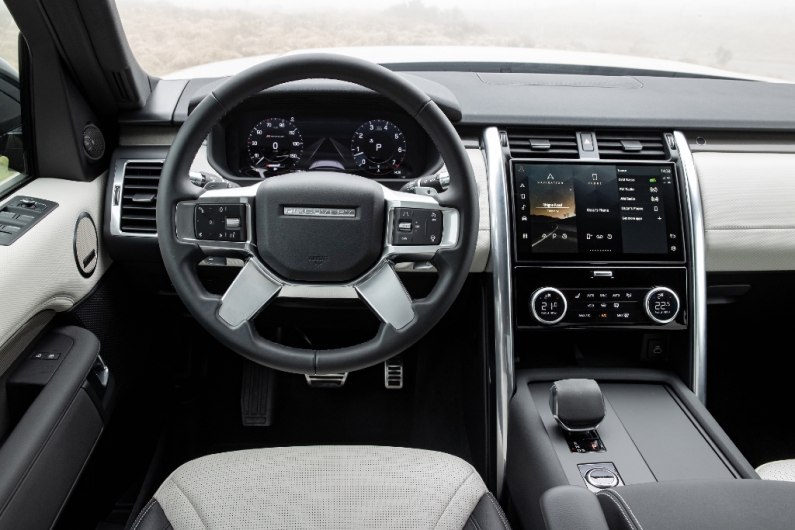
There’s loads of space inside the Discovery, something amplified by models with panoramic roof panels. The second row seats have been made plumper for added comfort, while passengers enjoy the same impressive levels of head and leg room. All too frequently in cars with a third row, the jump seats in the rear are treated as something of an afterthought. That’s not the case here with the Discovery happily facilitating two adults in the rearmost seats with adequate space. All passengers also have access to a charging port for today’s electronic pacifiers.
Open that signature split-folding tailgate to reveal 258 litres of boot space with all seven seats deployed, 1,137 litres with five in place, or a vast 2,391 litres in a two-seater configuration. Air suspension affords a lowering ‘access’ height to make loading the rear easier, or less of a jump for your four-legged friend.
There are four engines on offer for the Discovery, two petrol and two diesel. The diesel motors will attract those wanting that low-end torque for towing or climbing over obstacles off-road, while the more refined petrol engines offer a bit more performance. Both a new petrol and diesel mild hybrid inline six-cylinder engines can be optioned, each proving to be impressively smooth and greener than their predecessors. The P360 is the most potent of the bunch with 355bhp and 500Nm of torque, something that will get this big 4x4 from 0-62mph in 6.5 seconds.
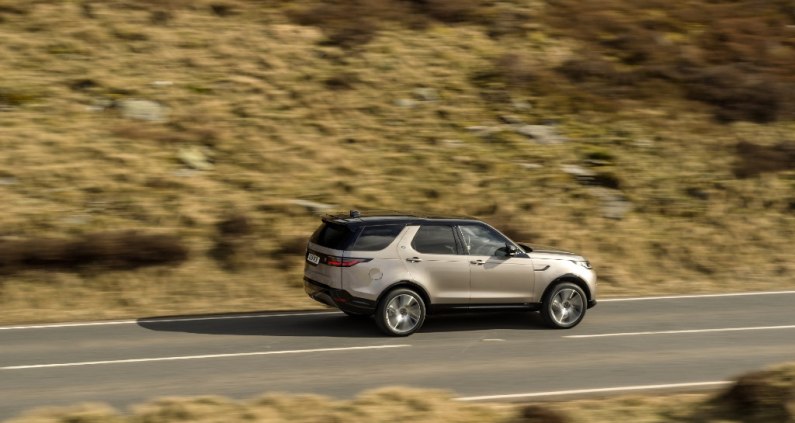
Tweaks to the chassis have made the Discovery a tad more road-bias in a deliberate attempt to separate it from the Defender. The ride is cosseting and great at absorbing the shrapnel of our less than perfect UK road surfaces. Steering inputs are met with positive changes of direction that are complimented by a secure grippy feel from the all-wheel drive chassis. It’s no go-cart, but it presents itself as direct and confident through the bends.
Overall the new Land Rover Discovery is better equipped, just as relaxing to drive as before, but now has the added benefit of those new mild hybrid engines. A Defender might possess that ‘cool factor’, but the Disco is still the car you’d want for those long hauls.
2021 Land Rover Discovery practicality and boot space
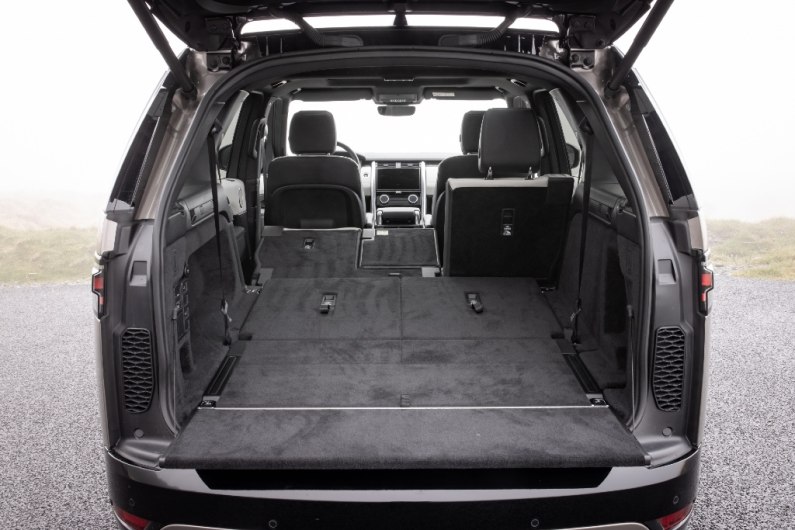
If you’re looking for a versatile seven-seat family car, the Discovery should certainly make your shortlist. There is acres of space inside this 4x4, with every passenger considered an equal, and not just a number on a spreadsheet. That ethos is best shown by the rearmost seats that are often a compromise for rivals. Both will facilitate and adult with acceptable head and leg room, both get a good size window to prevent a sense of claustrophobia, and each seat has somewhere for its occupant to charge their phone. Where cars like the Land Rover Defender offer up seven seats for occasional use, the Discovery is here full-time.
The middle row has been revised for this model year and now has seats featuring new cushions for added support. This rear bench can slide and recline for those wanting to stretch out over longer trips. Something else that’s pleasing is the totally flat floor that means the middle passenger doesn’t have to contend with a transmission hump.
A split-folding tailgate is a big asset for active families as it doubles up as a perch to ditch muddy boots, or a bench to organise backpacks. This Discovery is also able to squat the rear to improve access when loading heavy items or shepherding a dog or two into the boot. Speaking of the boot, even with seven seats in place there’s 258 litres, or enough for a few bags stacked on top of each other. With five seats in play there’s a huge 1,137 litres, or fold it all down for 2,391 litres. Spec your discovery right and you can remote control the seating configuration from an app – handy if you know you’re going to have your hands full.
2021 Land Rover Discovery engines

At this point in time you can’t have a plug-in hybrid Land Rover Discovery, but the revised car does introduce a pair of mild hybrids. These new engines, one petrol and one diesel, are both 3.0-litre inline six-cylinder engines supported by a 48-volt mild hybrid system. This electric architecture doesn’t serve to directly drive the Discovery, but supplement the combustion engine and run many of the car’s onboard systems.
The P360 is the most sprightly mild hybrid option with 355bhp and 500Nm of torque. It is a wonderfully refined motor that delivers its torque lower than expected thanks in part to that 48-volt system. There’s a minor delay if you aggressively prod the throttle, but this big lady soon hitches up her skirt and gallops down the road. Considering the car’s size and weight, 0-62mph in 6.5 seconds isn’t shabby at all. Land Rover officially claims 26.7mpg and emissions of 238gkm CO2.
In the diesel corner is the D300 mild hybrid that is again very smooth. Generally speaking its is a quiet thing, but can be more vocal under load than the petrol option as you’d expect. There’s a good sense of mechanical muscle to this engine, supplying 650Nm of torque to those wanting to tow heavy trailers or make the most of the Discovery’s off-roading abilities. It has a en economy benefit over its more powerful petrol alternative, with a WLTP figure of 33.9mpg and a cleaner CO2 tailpipe emission of 218g/km.
There are a pair of conventional engines, again one diesel and one petrol, in the form of the D250 and P300. All engines transfer their performance potential via an eight-speed automatic transmission. This gearbox is blissfully smooth when left to its own devices, however, it can be caught napping somewhat when commanded via the wheel mounted paddles.
2021 Land Rover Discovery driving

The biggest differentiator between a Defender and the Discovery is how it behaves on road. A Defender might be on another planet in comparison to its predecessor in terms of refinement, but the Discovery remains the most comfortable of the two for extended periods on the road. Around town the Discovery’s drivetrain is sophisticated and quiet, and its ability to soak up road imperfections makes progress through the urban sprawl feel effortless. Larger alloy wheels can create a thump when going over potholes, but it’s far from outrageous.
Building speed in petrol models is hushed and only narrated by some wind noise building around the door mirrors. Once up to a cruise, the drivetrain is whisper quiet and unwanted external noise is pleasantly kept at bay. While many Discoverys will have that tranquility interrupted by the noise of bickering children, its otherwise peaceful cabin certain has a touch of Range Rover dignity to it. The diesel options are just as mature, and do offer a torque advantage over the petrols for even stronger overtaking manoeuvres. They can be a little noisier under hard acceleration, but that soon melts away as they effortlessly clock the motorway miles. These mild hybrid engines are certainly a success for JLR.
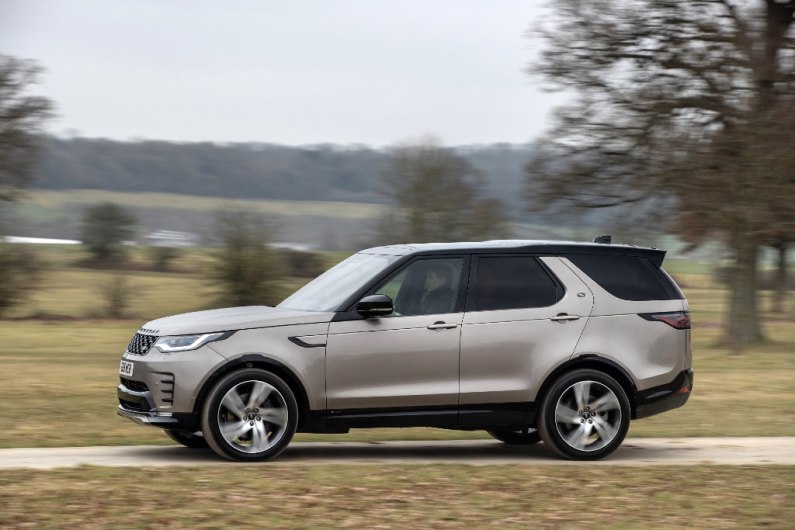
No Land Rover Discovery is particularly sporting in the way it drives, but alterations to this model year are said to make them a bit sharper. It’s hard to come to a definitive conclusion on that without driving the old car back-to-back, but there’s definitely an alertness to the steering. It’s weighty, and you still have to be deliberate with your inputs, but there’s a self-assurance to the way this Discovery goes through the bends. An abundance of grip gives you a secure feeling behind the wheel, and that remains throughout all weathers. Although body roll is predictable and controlled for this size of car, it is enough for you to not take too many liberties with models such as the P360.
As good as the Discovery is on road, that’s only half the story. Rooted deep within Disco DNA is pure off-road talent, and this facelift car hasn’t lost any of that. In addition to all the luxury tech such as touchscreens and over the air updates, this Discovery features Terrain Response 2. This system uses a myriad of sensors to work out exactly what surface you are on, raises the ride height accordingly and locks any necessary differentials. The intelligent all-wheel drive will then dish out power to the appropriate wheel to maximise traction. Factor in impressive approach and departure angles, a competent Hill Descent Control, as well as a low range mode, and you’ve got a seriously capable off-roader. Tech such as a suite of cameras help you monitor any obstacles that are out of sight, and wade depth sensors keep an eye on water levels.
It doesn’t matter if you want to take your children, their grandmother and the dog to Tesco or up Ben Nevis, the Discovery has you covered.
